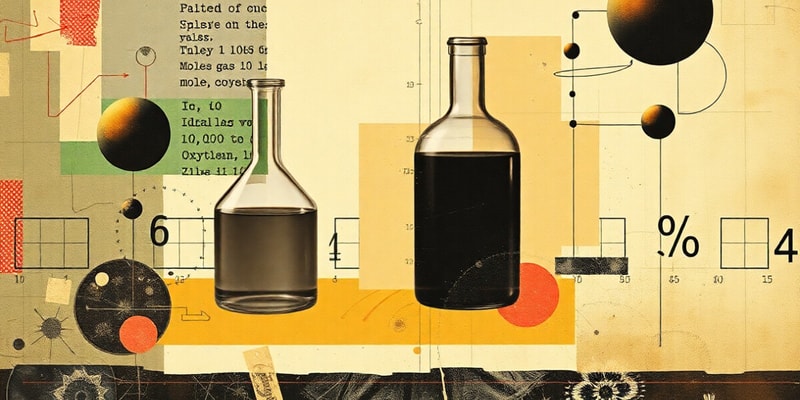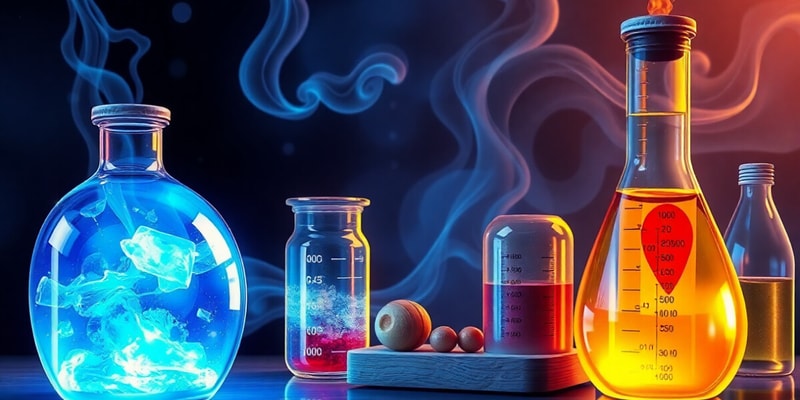Podcast
Questions and Answers
The molecular mass of oxygen (O2) is 28 g mol−1.
The molecular mass of oxygen (O2) is 28 g mol−1.
False
At 20 °C, the equivalent temperature in Kelvin is 293.15 K.
At 20 °C, the equivalent temperature in Kelvin is 293.15 K.
True
The mole fraction of oxygen in air is 0.32.
The mole fraction of oxygen in air is 0.32.
False
Using the ideal gas law, the number of moles of oxygen in 1 L of air at 20 °C and 1 atm is approximately 0.042 mol.
Using the ideal gas law, the number of moles of oxygen in 1 L of air at 20 °C and 1 atm is approximately 0.042 mol.
Signup and view all the answers
The mass of oxygen present in 1.0 L of air is 0.296 g.
The mass of oxygen present in 1.0 L of air is 0.296 g.
Signup and view all the answers
Study Notes
Ideal gas Law
- The ideal gas law is defined as PV = nRT
- P represents pressure, V represents volume, n represents the number of moles of a substance, R represents the ideal gas constant, and T represents temperature
- In this case, we are solving for the number of moles so the ideal gas law can be arranged to n = PV/RT
- We are given a volume of 1.0 L, a pressure of 1.0 atm, and a temperature of 20 C
- The temperature must be in Kelvin so we add 273.15 to 20 degrees C to get 293.15 K
- The ideal gas constant R is 0.082 L atm mol−1 K−1
- The number of moles of air calculated is 0.042 moles
Oxygen
- The mole fraction of oxygen is 0.22, which means 22% of the air is Oxygen
- To find the number of moles of oxygen, we multiply the mole fraction of oxygen by the total number of moles of air
- The number of moles of oxygen is 0.00924 moles
Mass of Oxygen
- The molecular mass of oxygen is 32 g/mol
- We multiply the number of moles of oxygen 0.00924 mol by the molecular mass of oxygen, 32 g/mol, to get the mass of oxygen in 1 L of air
- The mass of oxygen is 0.296 g
Studying That Suits You
Use AI to generate personalized quizzes and flashcards to suit your learning preferences.
Related Documents
Description
This quiz covers the application of the ideal gas law, specifically focusing on calculating the number of moles of air and oxygen. It includes problem-solving with variables such as pressure, volume, temperature, and molecular mass. Perfect for students learning about gas laws in chemistry.




